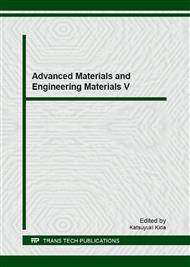p.230
p.237
p.242
p.246
p.251
p.256
p.261
p.267
p.273
The Influence of Geology Factor on Alkaline Surfactant Polymer Flood Effect and the Corresponding Strategy
Abstract:
This study gives the influence laws of abandoned channel, in-layer interlayer, sand body contact relationship on the development effect of the Alkaline Surfactant Polymer (ASP) flooding based on the data of the industry promotion block ( Pu I32、Pu I33 sedimentation), and give out corresponding adjustment strategy at the same time. The result shows that: The ‘abruptly abandoned’ channels have a bad connection with the main channel and possesses a far lower reservoir producing degree (16.1%) than the ‘gradually-abandoned’ channels (79.9%). The injection wells located upon the channel sand need high concentration inject fluid with lower injection rate to handle the polymer breakthrough; The injection wells located between the channels need lower concentration injection; The injection wells located upon the abandoned channels firstly need high concentration injection to achieve the profile control and then inject low concentration fluid to adjust low permeable sublayer; The production wells located upon abandoned channels need timely fracturing measures. By July 2014, water content of this area is 90.7%, oil recovery improved 18.08% and is expected to reach 22.0%. Similar the success experience we get from this area can guide the study of block geologic factors that affect development result and has important guiding significance to the implementation of pointed development adjustment.
Info:
Periodical:
Pages:
251-255
Citation:
Online since:
August 2016
Authors:
Price:
Сopyright:
© 2016 Trans Tech Publications Ltd. All Rights Reserved
Share:
Citation:


